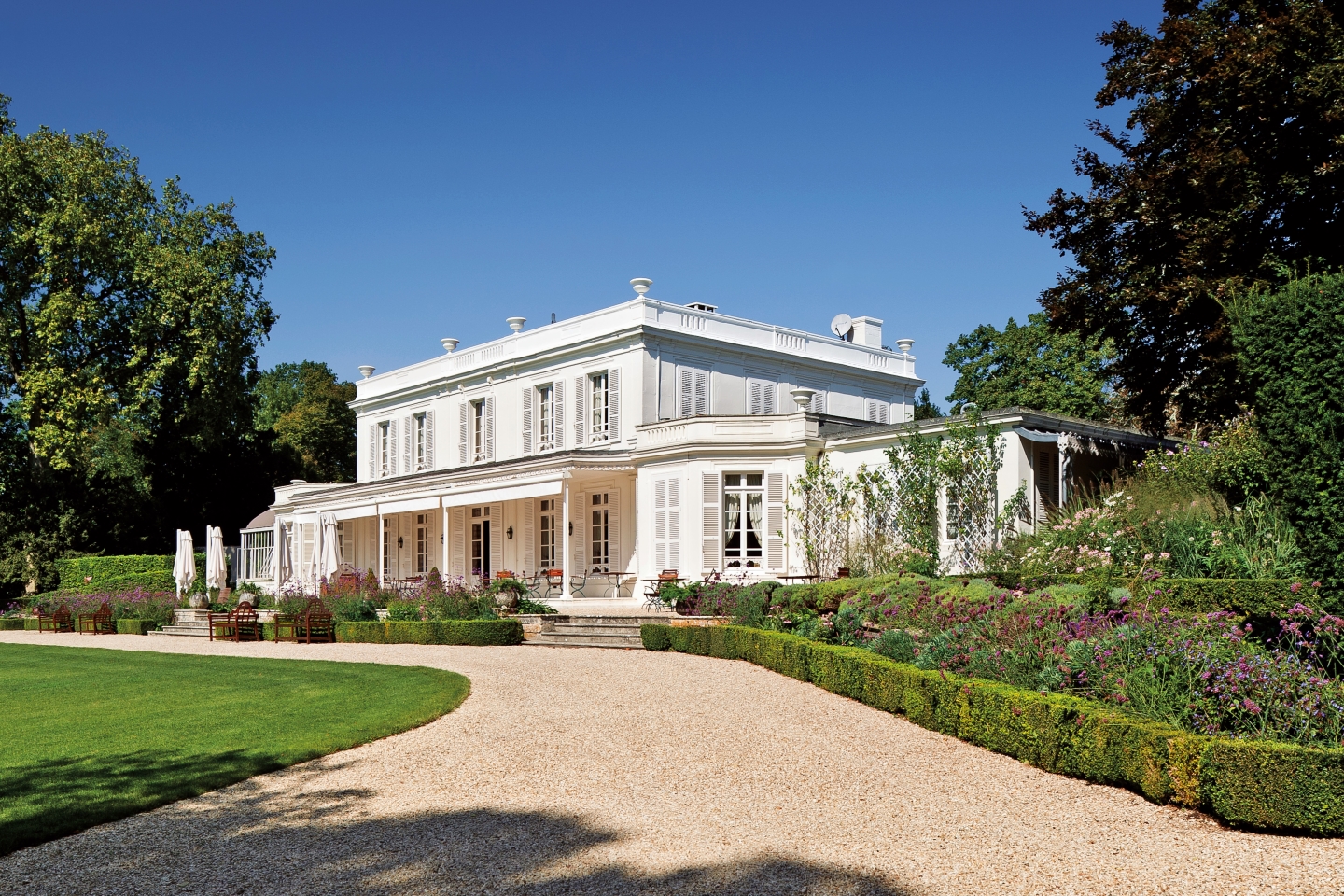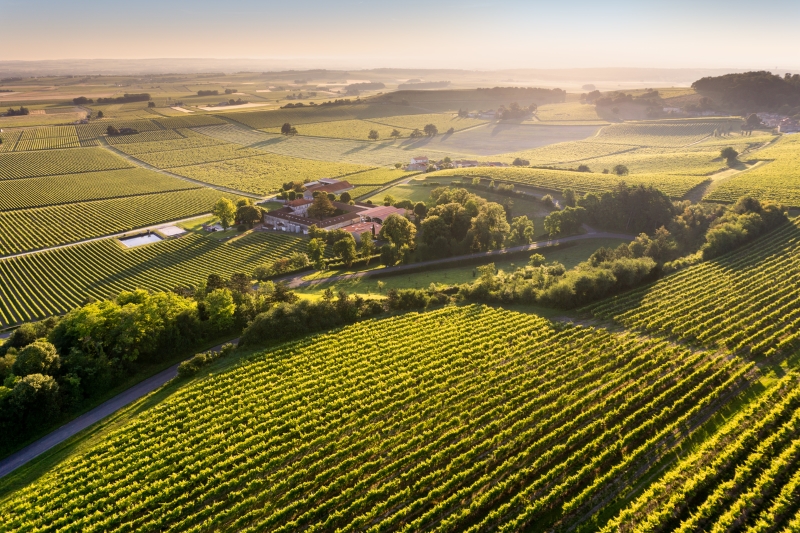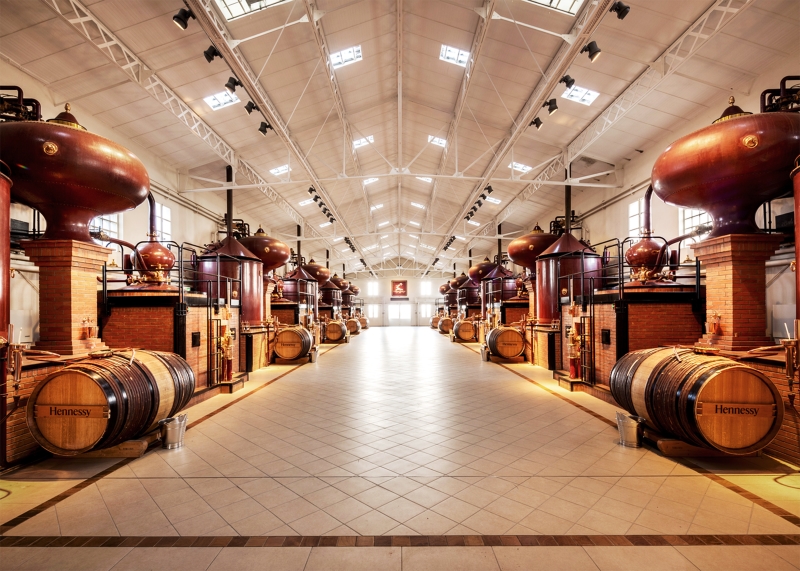
Château de Bagnolet, the former Hennessy family estate, on a sunny day (All photos: Hennessy)
All great things must start somewhere. A place of origin may not always be the most expected or obvious, but is crucial nonetheless in the long run. For lionised cognac label Hennessy, that genesis was, funnily enough, Ireland, where founder Richard Hennessy was born in 1724.
The youngest child of an aristocratic Catholic family, Richard made up for what he lacked in wealth with extraordinary courage and ingenuity. These qualities led him to depart his homeland and join Louis XV’s army. After leaving the forces in 1756, he trained as a wine merchant with his uncle and cousin before establishing a dealership with two partners in 1765. The business was set up on the banks of the Charente river in Cognac, where it stands to this day as the maison’s headquarters.
Three centuries later, Hennessy has evolved into a giant of the cognac industry, taking up roughly 40% of the international market alone. From Chinese wedding banquets to the lyrics of hip-hop’s greatest rappers, the amber beverage is an emblem of status and luxury just by its name. To commemorate the 300th anniversary of Richard Hennessy, and by extension the centuries of exceptional savoir-faire and heritage he initiated, the maison hosted a once-in-a-lifetime tour through its historical and novelty sites — revisiting where it all began and looking forward to the future.
jas_hennessy_co_alain_benoit_medium.width-1280x-prop.jpg

Grape to glass
The journey begins in the vineyards with the humble grape. The rows of vines, which brand ambassador Thierry Sales informs are mostly of the Ugni Blanc variety, stretch as far as the eye can see, a sight straight out of a holiday postcard. Mustard plants sprouting tiny yellow flowers, alongside other selected weeds and cover crops, blanket the ground. These little plants do more than simply look pretty — they aid in the creation of nutrient-dense soil and prevent erosion while attracting helpful pollinators. While it is usually not open to the public, the 75,000ha of greenery is now available as part of pre-booked tours during which visitors have the opportunity to get up close and personal with the flora, using electric bikes to get around.
The vineyards are also ground zero for Hennessy’s sustainability commitments. “We want to protect the environment. We are very concerned with the ecology,” says Sales. “We have been herbicide-free for six years now, and are working with our partners to be the same by 2028. Responsibility is the price of greatness.”
After each autumn harvest, the grapes are pressed and the wine obtained is slowly refined twice in large copper stills. Different maisons have their own preferred methods, fine-tuned through the years to reflect their personal principles and the desired end-product. Hennessy’s process is a continuation of its sustainability initiatives, seen in its switch from traditional fuel materials like coal and wood to biomethane for the heating part of distillation.
Now, what happens to the wine after distillation? Well, the eaux-de-vie (or ‘water of life’), which emerges from the stills completely clear and with a whopping 70% ABV, is stored in French oak barrels which Hennessy’s dedicated group of coopers make out of timber hailing from the Limousin forests in central France. The 13-man team produces as many as 1,000 barrels each year (Hennessy also partners with other cooperages in the region to bring in 40,000 more units annually), which is equivalent to quite a few trees. But, Sales assures that the brand remains mindful of the devastating effects of deforestation and out of respect for the woodlands, replants three trees for each one cut down while making sure to only utilise specimens that are at least 80 years old.
hennessy-alain-benoit-corporate-savoirfaire-distillation-2018-001-evin_medium.width-1280x-prop.jpg

To witness the craft first hand, the tour continues at L’Atelier de Tonnellerie. Wooden planks are arranged upright in a circle with a metal ring and then hammered into place before being shaped over fire. Precision is key, as adhesive is not used, and creating a leak-proof seal comes down to the exact placement of each component. Just like artwork, the lid of each barrel is signed by its maker before it is filled with eaux-de-vie and left to mature, waiting to be chosen by the tasting committee for blending.
Heritage + evolution
It is a common belief among the youth in France and around the world that cognac is stuffy, intimidating and “an old man’s drink”. Hennessy’s efforts to slowly but surely change this narrative lies in the brand’s ability to incorporate technology and newness in both its products and production process while still highlighting the beverage’s rich heritage and staying true to its core ethos.
This duality is seen in the label’s network of 65 cellars, of which there are several kinds. The traditional cellar of La Faïencerie looks exactly as you might picture — rows and rows of barrels stacked on top of one another in large, dimly-lit warehouses. Each unit is painstakingly positioned by hand, a back-breaking task that few are experienced and committed enough to do right. Closer inspection reveals the harvest year and batch number written on the side of the barrels in a distinct calligraphy font.
Not too far away, Le Chai du Fondateur houses the maison’s antique eaux-de-vie and cognac reserves, with the oldest demijohn bottle dating back to 1800. These precious liquids have not been forgotten in the slightest. Rather, they are in storage until they reach their prime as, according to Sales, “each one has a different maturation potential” — even if it is centuries down the road.
hennessy_visits_-_vr_mobilis_5_c_jas_hennessy_co.jpg

On the other hand, Bas Bagnolet, the newest range of Hennessy’s cellars, is a futuristic 180° shift from its predecessors. The repositories here are bright and filled with floor-to-ceiling steel shelves. With the help of smart machinery, workers are able to stack more barrels in shorter amounts of time with significantly less physical exertion.
Getting acquainted with the history of cognac can now be done in a fun and interactive way thanks to Hennessy’s Mobilis virtual reality experience that sweeps visitors away on a magical journey through the maison’s rich heritage. Take a trip down the Charente river with floating barrels of cognac (a nod to how the drink was transported back in the day) that come together to form gentle humanoid giants that guide you through the creation process, from harvesting grapes to witnessing the impact of cognac around the world.
Of course, if there is only one place to really learn about the maison’s evolution and global reach, it would have to be the Cabinet du Patrimoine. Located in the Hennessy headquarters, the archives contain an extensive and ever-expanding collection of documents, artefacts and vintage merchandise from all over the world (much of which, to our pleasant surprise, comes from Malaysia and Southeast Asia). From advertisements and business ledgers to collector’s bottles and rare paraphernalia, this registry details the label’s conception, its arrival on international shores and the legacy each bottle carries into the present.
Family ties
A trip of this scale can only culminate with one grand final activity — an ultra-exclusive visit to Château de Bagnolet, the former Hennessy family estate. Now reserved for entertaining celebrity guests and VIP clientele, the house is surrounded by well-manicured gardens, the river just a stone’s throw from the back patio. Time seems to slow down at this serene countryside getaway, shrouding it in a cloak of peace and calm.
Upon arrival, we are swiftly welcomed by the château’s team of attentive staff and shown to our rooms, each different from the next. The bungalow’s interior maintains much of its original belle epoque charm, with patterned wallpaper, plush upholstered furniture and ornate decor giving it an eclectic and homely atmosphere. Bona fide artefacts and artwork of Hennessy family members from the years past decorate the common spaces. The wooden floorboards and stairs creak slightly underfoot, echoing the sounds of previous generations and many happy moments shared over a dram or two.
hennessy_cognac_france.jpg

Our evening kicks off in the winter garden, a glasshouse right beside the dining room that is home to more than 200 rare species of Mediterranean plants from around the world. Starting with cocktail hour is the only correct course of action, but with a fun DIY twist to really see how cognac can be enjoyed in various forms. Using Hennessy V.S.O.P (of course), we try our hand at mixing an array of drinks, including classic cocktails like the citrusy Sidecar and spirit-forward Sazerac.
Château de Bagnolet’s paradigm French essence speaks for its close ties with the Cognac region and the family that put it on the map. And so, it is a fateful chance that we are joined at dinner by none other than Maurice Hennessy, eighth-generation Hennessy family member and former global brand ambassador. The cosy candle-lit dining room exudes a warm and intimate aura, akin to that when you enter the space of a friend or family member.
Focusing on seasonal produce and local staples, the meal starts off with watercress cannelloni in a cold green broth, topped with sesame breadsticks. This refreshing starter is followed by flakey Cotinière turbot fillets on a bed of beans and asparagus, presented in a traditional French service style on a large silver platter from which guests can pick their preferred portion as it is brought around the table by staff. Dinner then adjourns with tangy mango cheesecake garnished with passion fruit compote, paired with a dram of Hennessy Paradis for a sweet and smooth finale.
Despite his many years in the business, Maurice, like Hennessy enthusiasts everywhere, never grows tired of it. After all, in an industry that never stops changing, there is always something new to see and do. What remains the same is an undying passion and open-mindedness that allows him to find splendour in each glass — neat, on the rocks or in a delightful cocktail — that matches the fiery zeal of Richard Hennessy all those years ago.
This article first appeared on Apr 29, 2024 in The Edge Malaysia.


